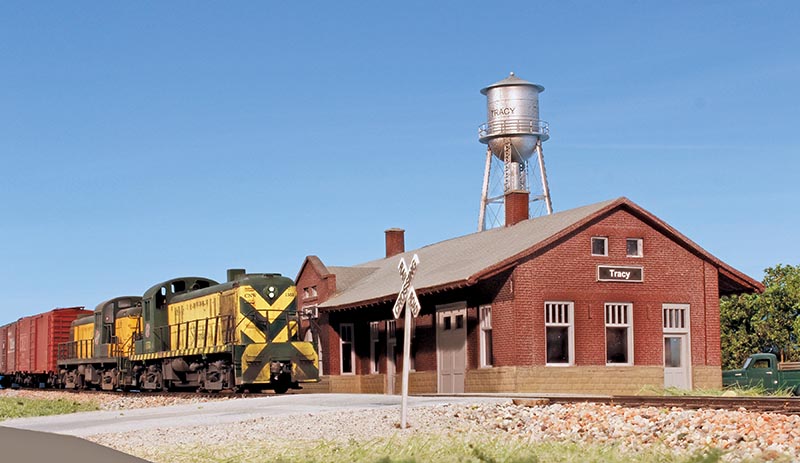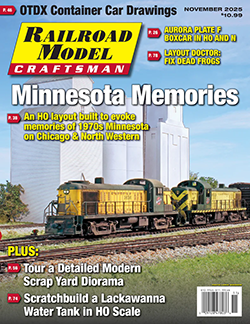 by Lance Mindheim/photos by the author
by Lance Mindheim/photos by the author
The subconscious mind is a mysterious place, often holding the key to our true motivations. It hums quietly in the background, doing heavy lifting beneath the level of obvious awareness. The same is true in our hobby. On the surface, we tell ourselves that model railroading is about kit assembly, scenery, wiring, and all the step-by-step tasks that make a layout run. But if that were the whole story, our efforts would amount to little more than a few ounces of plastic moving in circles — no different from slot cars.
For most of us, though, that’s not the real end game. What we truly seek is to be transported — to step into the layout room and return to a time and place that holds meaning for us. After a long week, we want to leave our troubles at the door and enter a world we’ve created to rekindle fond memories. A good layout becomes a doorway, carrying us back to another time and place — to echoes of trains we once watched, journeys we once took, landscapes we once loved. At the end of a long day, we want more than motion; we want to step into a world of our own making, where memory and imagination meet. The better we capture that feeling, the more powerful the escape becomes.
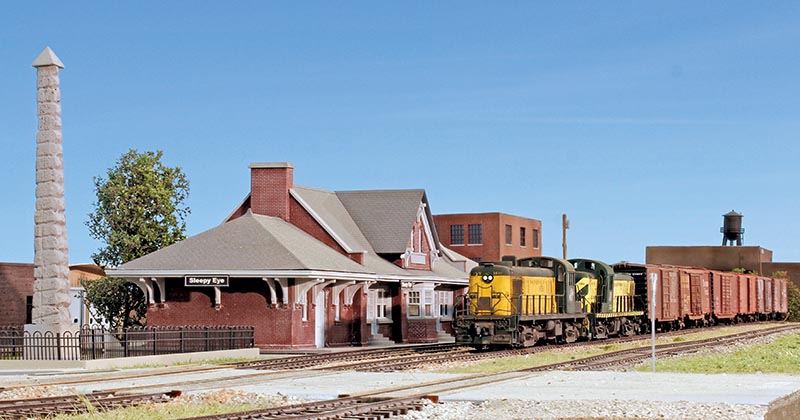
ABOVE: With everything on the switch list checked off, we’ll do one more brake test, throttle up, and cruise back to Tracy. The small park and monument is dedicated to Chief Sleepy Eye, the town’s namesake.
Such is the goal of the HO scale Chicago & North Western layout I recently constructed in my shop for my customer “David,” a time-strapped business owner in northern Illinois. David was unique from the standpoint of the clarity he brought to the project. He can hold his own with the best in the rivet-counting department. You know, the type that can instantly explain the distinction between an Alco RS-2 and RS-3, the kind that knows all of the operational nuances of their chosen line.
At the end of a long week of running his company, the last thing he wants is to run another business in miniature. He wants to walk into the layout room, couple up some faded locomotives on a train, and run non-stop through the prairies of southern Minnesota, to relive memories of those green-and-yellow smoke-throwers from days gone by. If the mood strikes, maybe he’ll set out a car here and there, but nothing too intense operationally.
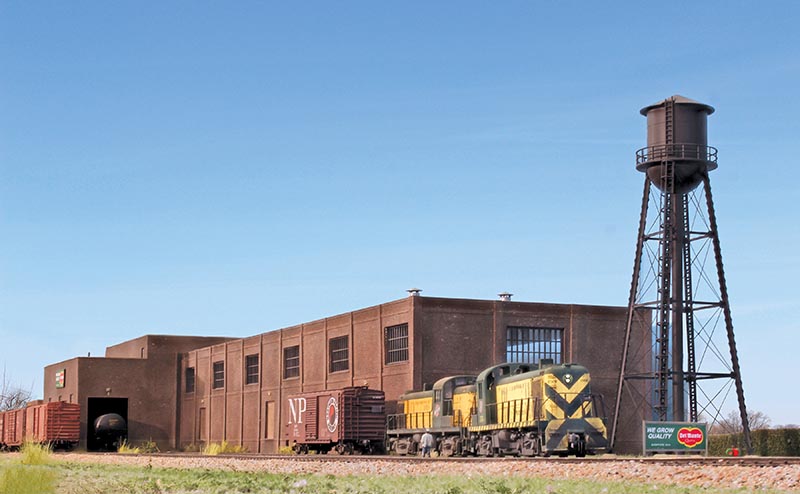
ABOVE: Now, for the primary reason for the trip: serving the customer who pays the bills, Del Monte plant No. 114. This facility is car-spot-dependent (meaning specific cars need to be spotted at specific points within the industry). The plant manager isn’t going to be happy if the boxcar of packing materials is spotted at the vegetable oil unloading track. After crawling to a stop, we’ll need to set a few hand brakes before uncoupling from the train. Today’s switch list calls for picking up that empty Northern Pacific boxcar and replacing it with a loaded car.
In situations like this, the layout becomes an enormous three-dimensional canvas. If the end goal is to be achieved, scene composition is crucial. Getting there involves careful study of the prototype, many relaxing hours with a cup of coffee, and thumbing through books and photos. You want to truly understand an area’s essence, what makes it what it is, its defining features, not just individually but collectively.
This means looking beyond individual elements that may stand out based on their coolness, and looking at areas as a whole. The end result often comes down to identifying and modeling the ordinary, not the extraordinary, those mundane features that characterize a region or locale. In southern Minnesota, that means pool-table-flat prairies stretching to the horizon in all directions. Every five or ten miles, you’ll have a small town, places no longer in their prime, generally home to a towering grain elevator or two.
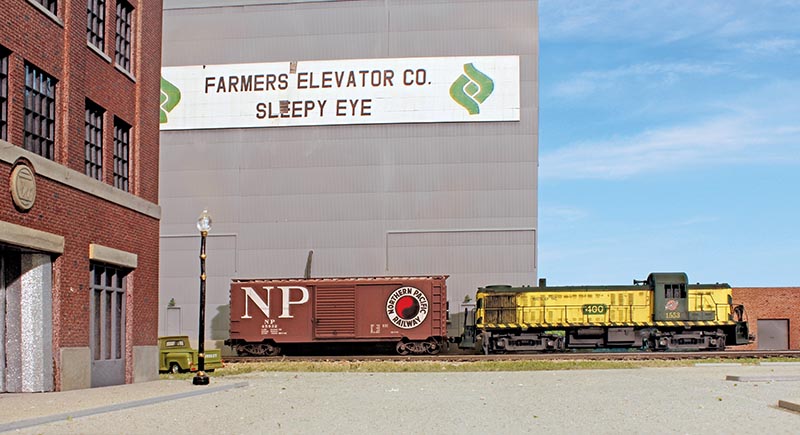
ABOVE: With today’s hard work done, working Del Monte, we’ll “turn around” on the Sleepy Eye siding and prepare to head back to Tracy. Before we go, we’ll do some cleanup work and grab that empty at Farmers Elevator to bring back with us. We’re facing north down Second Avenue.
Capturing this look means categorizing those prairies as the top “must-have features.” Including them takes top precedence over squeezing in yet another town or interesting kit. David sent me a number of books on the Alco Line. I spent many hours studying those as well as poring over Google Street View to get a sense of the area. Although the available layout room (in a renovated steel barn on his farm) is quite large, he avoided the temptation to try to squeeze in numerous towns and yards simply because they are there
The decision was made to only model four: Tracy to the west, Sleepy Eye and Mankato mid-run, and Waseca to the east. Yards were minimally represented. Why devote massive space to a yard if you have little interest in yard switching? A staging yard is a tool, nothing more, nothing less, a tool that is a fit for some objectives and not others. If you’ll be running solo, you’ll be running only one train, obviously. No need for staging…


